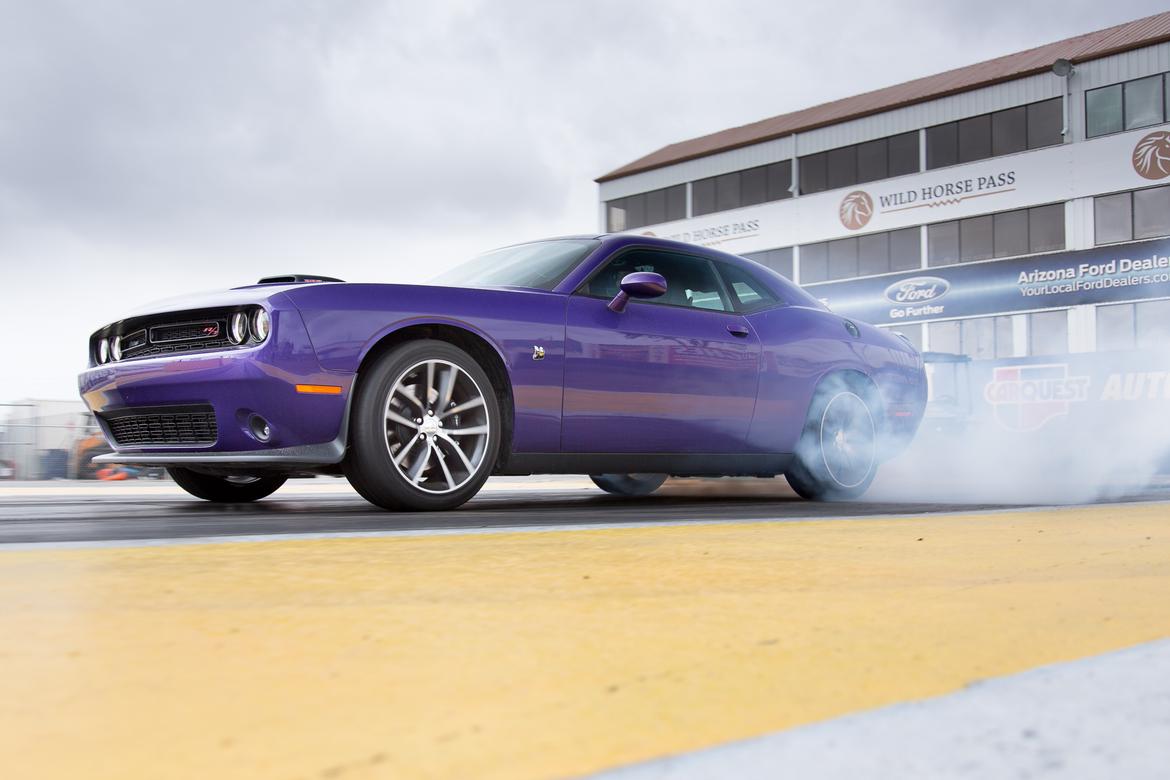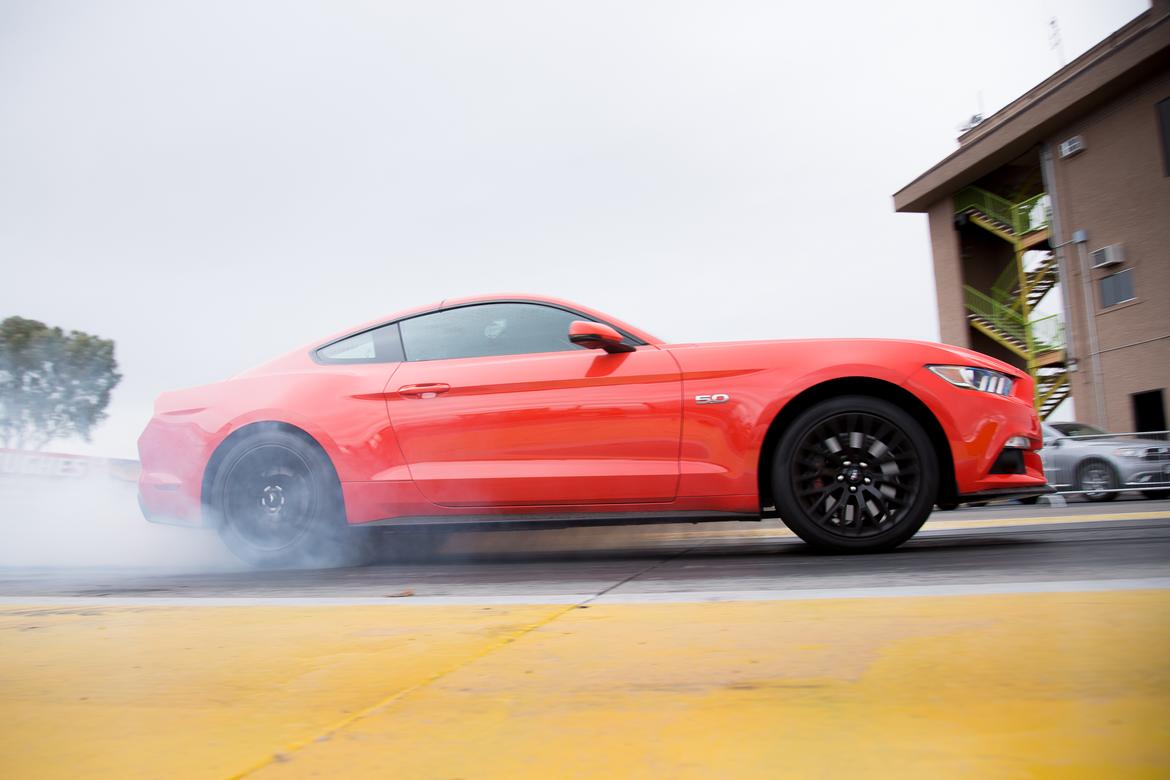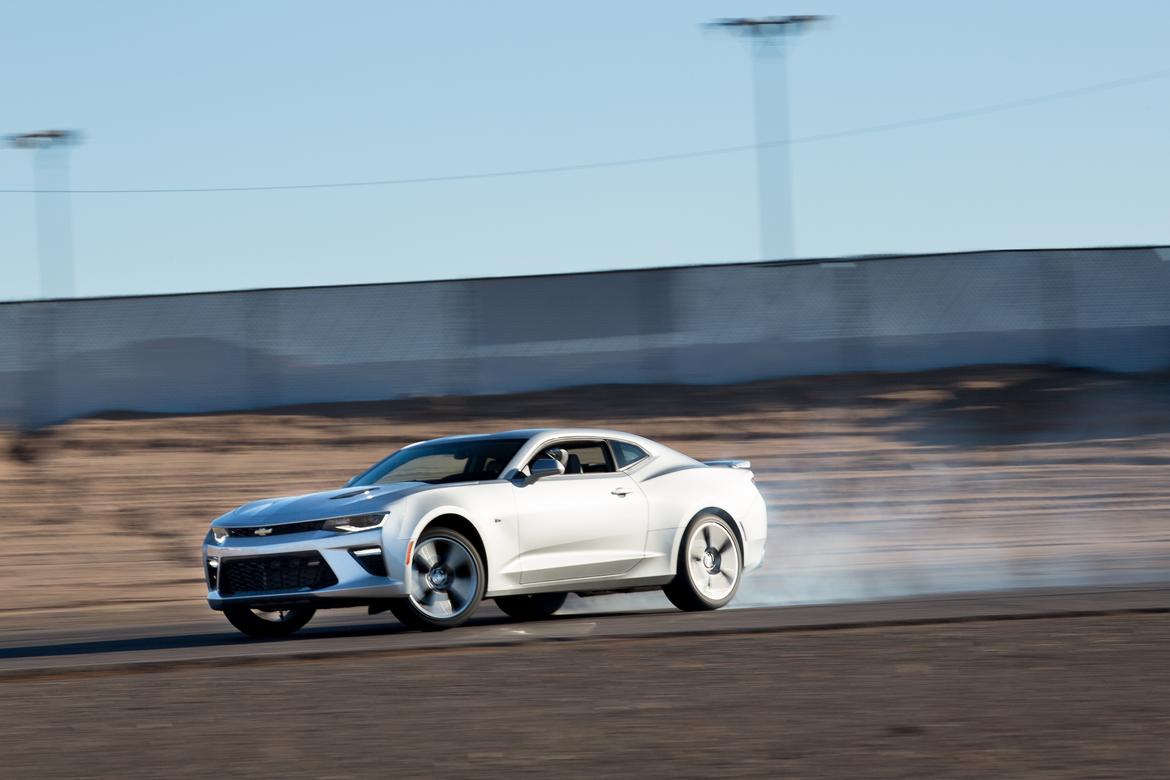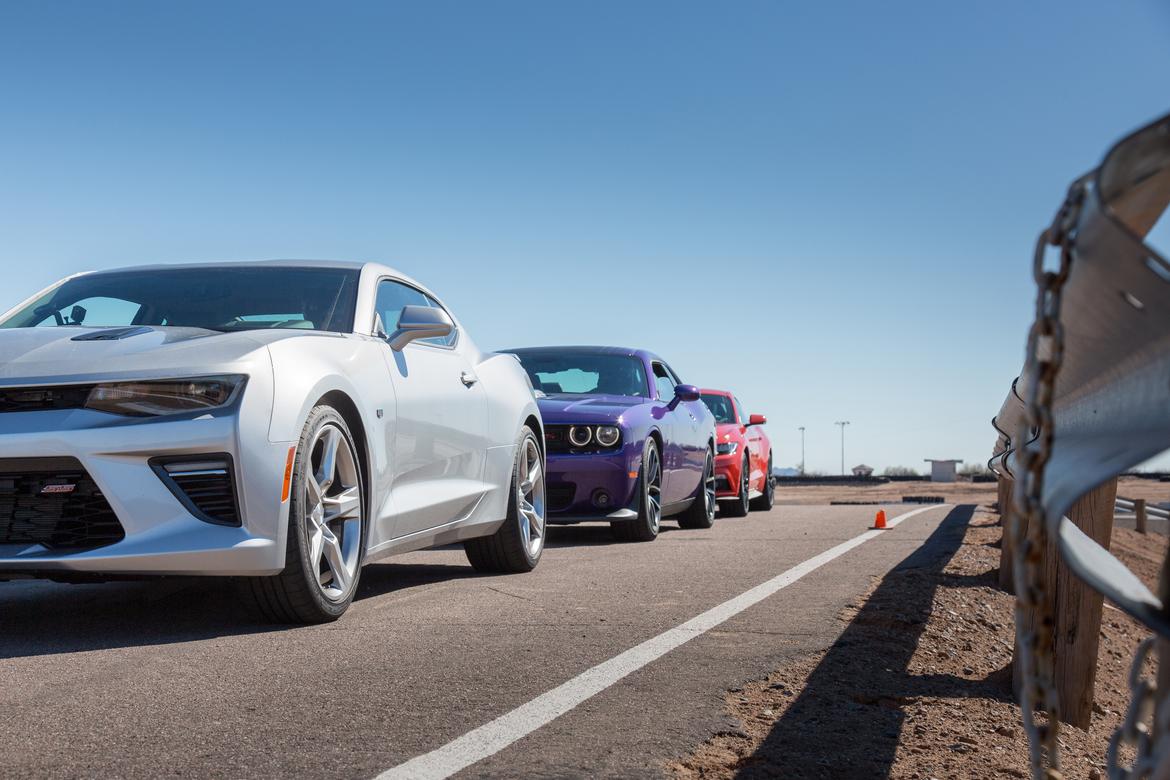Years before Steve McQueen made the '68
Ford Mustang an icon among the cars of Hollywood history, muscle cars
already had muscled their way into our hearts. Quintessentially "U-S-A!
U-S-A!" in their power, speed and all-around awesomeness, muscle cars
are America's ode to the freedom of the open road. And while our
collective romance through the decades has accelerated and braked by
turns, the torch we carry for the muscle car burns hot of late.

The classic trio of pony cars from the
Big Three automakers in Detroit — the Chevrolet Camaro, Dodge Challenger
and Ford Mustang — has enjoyed a sales resurgence in recent years.
Combined, car buyers purchased more than 266,216 of the cars in 2015,
according to the automakers. That's a 21 percent increase over 2014
sales and 27 percent over 2013.
The Mustang leads the pack; its sales totaled a whopping 122,349 in 2015 compared with 70,438 in 2011 — a 74 percent spike. That's roughly double the overall increase in U.S. auto sales overall during the same five-year span. The Mustang saw a 48 percent sales boost just between 2014 and 2015.

The Mustang leads the pack; its sales totaled a whopping 122,349 in 2015 compared with 70,438 in 2011 — a 74 percent spike. That's roughly double the overall increase in U.S. auto sales overall during the same five-year span. The Mustang saw a 48 percent sales boost just between 2014 and 2015.

The Chevy Camaro has been a formidable
rival since its relaunch in 2010 following a seven-year hiatus. Camaro
sales actually dipped to 77,502 in 2015 (with a redesign in the wings
for 2016) from 88,249 in 2011, but overall sales of 417,006 for the
five-year period still compare favorably with the Mustang's 435,603.
The Challenger lags those totals. Fiat Chrysler Automobiles sold 66,365 of them in 2015 compared with 39,534 in 2011, a 68 percent increase. From 2014 to 2015 alone, Challenger sales rose 29 percent. However, both the Mustang and Camaro far exceed the Challenger's five-year total of 252,091.
Despite recent gains, muscle-car sales are still just a fraction of what they were during their 1960s and '70s heydays. Be that as it may, the real fun over the past half-century of the muscle-car era hasn't been the sales figures, but the race.

The Challenger lags those totals. Fiat Chrysler Automobiles sold 66,365 of them in 2015 compared with 39,534 in 2011, a 68 percent increase. From 2014 to 2015 alone, Challenger sales rose 29 percent. However, both the Mustang and Camaro far exceed the Challenger's five-year total of 252,091.
Despite recent gains, muscle-car sales are still just a fraction of what they were during their 1960s and '70s heydays. Be that as it may, the real fun over the past half-century of the muscle-car era hasn't been the sales figures, but the race.

John Kraman, director of consignment
for Wisconsin-based Mecum Auctions, has personally witnessed the
rekindled love affair with the muscle car, primarily on the vintage and
collector side of things, and he has loved watching the ups and downs
through the years.
"The Detroit Three manufacturers have been battling the sales wars since the Ford Mustang and Plymouth Barracuda started it in April 1964," Kraman said. "The GM response was the 1967 Camaro, with Plymouth-cousin Dodge jumping in with the Challenger in 1970."
The modern era of the performance car with a retro theme kicked off in 2005 with the introduction of the S197 Mustang platform, Kraman explained. The Mustang's success in blending vintage styling with today's tech persuaded Dodge (Plymouth by then was defunct) to resurrect the Challenger in 2008, with Chevy countering in 2010 with the return of the Camaro.
"This retro-themed market has been driven by aging baby boomers seeking modern versions of the legends they grew up lusting over," he said. "In addition, younger buyers have also embraced this market due to the performance and technology they represent as current. Plus the styling theme of honoring the past but looking fresh and contemporary certainly has helped the multigenerational appeal."

"The Detroit Three manufacturers have been battling the sales wars since the Ford Mustang and Plymouth Barracuda started it in April 1964," Kraman said. "The GM response was the 1967 Camaro, with Plymouth-cousin Dodge jumping in with the Challenger in 1970."
The modern era of the performance car with a retro theme kicked off in 2005 with the introduction of the S197 Mustang platform, Kraman explained. The Mustang's success in blending vintage styling with today's tech persuaded Dodge (Plymouth by then was defunct) to resurrect the Challenger in 2008, with Chevy countering in 2010 with the return of the Camaro.
"This retro-themed market has been driven by aging baby boomers seeking modern versions of the legends they grew up lusting over," he said. "In addition, younger buyers have also embraced this market due to the performance and technology they represent as current. Plus the styling theme of honoring the past but looking fresh and contemporary certainly has helped the multigenerational appeal."

With all three pony cars back at the
top of their game in performance and value, Kraman said, excitement in
2016 is at a "fever pitch."
"This three-way market has forced all the builders to fine tune and improve their entries to stay competitive," he said. "As long as these combinations of styling, performance, technology and value continue, the market will remain strong and viable."
For an even better idea of how far muscle cars have come, check out Cars.com's 2016 Muscle Car Challenge. We pitted V-8 and V-6 versions of the Camaro, Challenger and Mustang against one another during a week of intensive testing on the track and on the highway:
"This three-way market has forced all the builders to fine tune and improve their entries to stay competitive," he said. "As long as these combinations of styling, performance, technology and value continue, the market will remain strong and viable."
For an even better idea of how far muscle cars have come, check out Cars.com's 2016 Muscle Car Challenge. We pitted V-8 and V-6 versions of the Camaro, Challenger and Mustang against one another during a week of intensive testing on the track and on the highway:
No comments:
Post a Comment